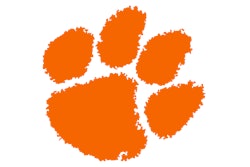Copyright 2017 The Washington Times
All Rights Reserved
The Washington Times
Clemson coach Dabo Swinney called his team's dramatic 35-31 upset victory over favored Alabama for college football's national championship Monday night a "blessing."
"I knew they wouldn't quit," Swinney told reporters after the game about his team's comeback win. "I talked to them about letting the light inside of them always be brighter than the light that's shining on them! If they focused on that, they'd be OK."
The light that shines.
It's a bright light for those Clemson players - and even for the Alabama players who lost. It's the light of championship glory, and as they say, no one can take that away from you. The Clemson Tigers will always be the 2016 college football national champions.
But what happens when that light grows dim? And then goes out?
What happens to those players in that Monday night game who won't remember the championship glory years from now - far more premature than anyone would have expected?
What happens when the light becomes darkness?
It will, you know. There were players on both sides of the ball Monday night whose ability to bask in that glory when they are fathers and grandfathers will no longer be there - when they look at the photos recording their night of glory and don't recognize themselves.
The freedom fighters who want to paint college football players as victimized workers might want to get their priorities in order. Before we start worrying about paying these players, the more important goal may be to protect them.
According to a study released in October by the Concussion Legacy Foundation, 91 percent of deceased former college football players had brain damage - CTE, chronic traumatic encephalopathy.
Of the 152 examined at the Veterans Affairs-Boston University-Concussion Legacy Foundation brain bank, 138 had brain damage. The foundation reported that it found cases of CTE in players from 39 of the 64 Power Five conference schools - including Alabama.
"This information is being released to raise awareness that CTE is not just an issue for professional football players," CLF co-founder Chris Nowinski said in a statement. "The data should not be interpreted to say that players from these schools are at greater risk than other college players. Instead, the data shows the widespread reach of this disease, and the commitment by the alumni and their families of these schools to support CTE research by participating in brain donation."
The NFL gets all the attention in the concussion debate, but what is happening in college football should be of greater concern - younger men, many of whom will not go on to the NFL, with no protections years from now when the distinction of being a college football champion grows cloudier because of dementia.
You can't sue a school like Alabama because, as a public university, it has governmental immunity from such lawsuits. So former Crimson Tide players like Cole Harvey and Ray Hudson have to go after the NCAA and the SEC in their lawsuits seeking damages from brain injuries allegedly suffered during their time in the Alabama football program.
Harvey, who was an offensive lineman gray shirted in 2005 and redshirted in 2006, filed a lawsuit in October claiming that he suffered between 10-15 concussions in his time at Alabama. He now suffers from seizures, migraines, extreme light sensitivity and "other debilitating issues," according to the suit, which charges he would be "quickly returned to the field of play" after suffering concussive or sub-concussive hits."
The suit claims "Alabama coaches demanded that Alabama football players, including Plaintiff, forego their own self-interest and continue playing despite sustaining head injuries for the purpose of advancing the Alabama football program by winning games, obtaining fame and favorable publicity, and gaining millions of dollars in revenue for Alabama, SEC, and the NCAA."
You saw that fame, favorable publicity and millions of dollars in revenue Monday night in Tampa.
College football put in place concussion protections in 2010 with legislation that required schools to use guidelines for dealing with concussion, but that does nothing to protect those who played before then.
The NCAA proposed a settlement in 2014 that included $70 million for testing former athletes for the next 50 years and whopping $5 million for concussion research. But there was no compensation for the medical expenses of former athletes suffering brain damage after they are done playing.
The college game will became the next arena of battle in the concussion dispute. Besides Harvey's lawsuit, 42 other players filed lawsuits last year charging that the NCAA knew or should have known concussion risk but "actively concealed" that information to "protect the very profitable business of 'amateur' college football," according to the lawsuit.
Expect to see more players to follow suit, so to speak.
Wonder if Clemson running back Wayne Gallman will ask for help someday.
In October, Gallman was taken out of their 24-17 win over North Carolina State after a nasty helmet-to-helmet hit from cornerback Dravious Wright. He told reporters after the game he was unconscious after the blow - "it was like I went to sleep and I woke up" - and spent the following week in concussion protocol.
But he refused to acknowledge he had suffered a concussion.
"I wouldn't even call it a concussion," Gallman said.
He may someday, though - when the light grows dim.
Thom Loverro hosts his weekly podcast "Cigars & Curveballs" Wednesdays available on iTunes and Google Play.
Read More of Today's AB Headlines
Subscribe to Our Daily E-Newsletter
Terms and Conditions Privacy Policy































